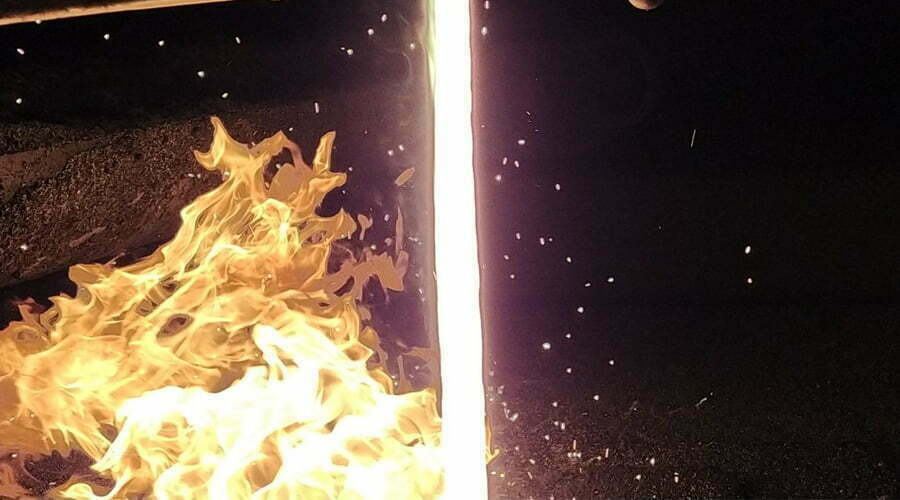Features
Ladle Furnace vs Blast Furnace Details
Ladle furnace is an important metallurgical equipment used to refine molten steel melted in primary furnaces (electric arc furnace, open hearth, converter),
and can adjust molten steel temperature, process buffering, and meet continuous casting and continuous rolling requirements.
It is one of the main equipment for refining outside the furnace.
Main Functions of Ladle Refining Furnace
1.The function of heating the molten steel and keeping it warm.
The molten steel obtains new thermal energy through arc heating,
This not only makes it possible to add alloys and adjust components during ladle refining, but also to add slag, which is convenient for deep desulfurization and deoxidation of molten steel.
Moreover, the molten steel opening temperature required by continuous casting is guaranteed, which is beneficial to the improvement of the quality of the dry casting billet.
2.Argon Stirring Function.
Argon gas is blown into the molten steel through the breathable brick installed at the bottom of the ladle, and the molten steel obtains a certain stirring function.
3.Vacuum Degassing Function.
After being hoisted into the vacuum tank by the ladle, vacuum degassing is carried out by a steam jet pump.
At the same time, by blowing argon at the bottom of the package to stir the molten steel, the hydrogen content and nitrogen content in the molten steel can be removed,
and further reduce the oxygen content and sulfur content, and finally obtain higher purity molten steel and materials with superior performance.
The application of ladle refining furnace can at least speed up the production rhythm for the whole enterprise and improve the whole metallurgical production efficiency.
Applications: Ladle refining furnaces are widely used in industry, steel, metallurgy and other industries.
Main Functions of Blast Furnace
The blast furnace is the main equipment for smelting liquid molten iron.
The cross section is a circular iron-making shaft furnace, with steel plate as the furnace shell and refractory brick lining inside.
Due to the advantages of good technical and economic indicators of blast furnace ironmaking, simple process, large production volume, high labor production efficiency and low energy consumption, the iron produced by this method accounts for the vast majority of the world’s total iron output.
During blast furnace production, iron ore, coke, and slag-forming flux (limestone) are charged from the top of the furnace, and preheated air is blown from the tuyere located at the lower part of the furnace along the furnace circumference.
At high temperature, the carbon in the coke (some blast furnaces also inject auxiliary fuels such as pulverized coal, heavy oil, natural gas, etc.) and the oxygen in the air are combusted to generate carbon monoxide and hydrogen, and the iron ore is removed during the rising process in the furnace. Oxygen, thereby reducing to obtain iron.
The smelted molten iron is released from the iron mouth.
Unreduced impurities in iron ore and fluxes such as limestone combine to form slag, which is discharged from the slag port.
The generated gas is discharged from the top of the furnace, and after dust removal, it is used as fuel for hot blast stoves, heating furnaces, coke ovens, boilers, etc.
The main product of blast furnace smelting is pig iron, as well as by-product blast furnace slag and blast furnace gas.
Structural Aspects
Ladle furnace composition structure:
Electric furnace transformer, short net, electrode lifting device, cover and cover lifting device, heating bridge, ladle, ladle car, wire feeder, argon gas conditioning system, cooling water system, compressed air system, hydraulic system, temperature measurement and sampling device , automatic feeding system, high-voltage power supply system, low-voltage electrical control system, automation system, etc.
Blast Furnace Composition:
The main components are:
furnace shell, furnace throat, furnace body, furnace waist, furnace belly, hearth, furnace bottom, furnace foundation, furnace lining, furnace throat guard plate, etc.
A charging device is set above the furnace throat;
The upper part of the hearth is evenly equipped with air outlets along the circumference, and the hot air passes through the hot air surrounding pipes, branch pipes, elbows, and straight blowing pipes.
It is blown into the furnace from the tuyere; there are slag outlet and iron outlet under the plane of the tuyere.
Due to the small amount of slag in modern giant blast furnaces, there is no slag outlet.
Ladle furnace vs blast furnace has many differences in appearance, structure, craftsmanship and so on.
But both are very popular in the smelting industry.
Stay tuned to us for details and differences between the two stoves.
You are also welcome to discuss with us.
For any needs about ladle furnace or blast furnace, please feel free to contact us, our professional engineers will provide you with corresponding solutions.

